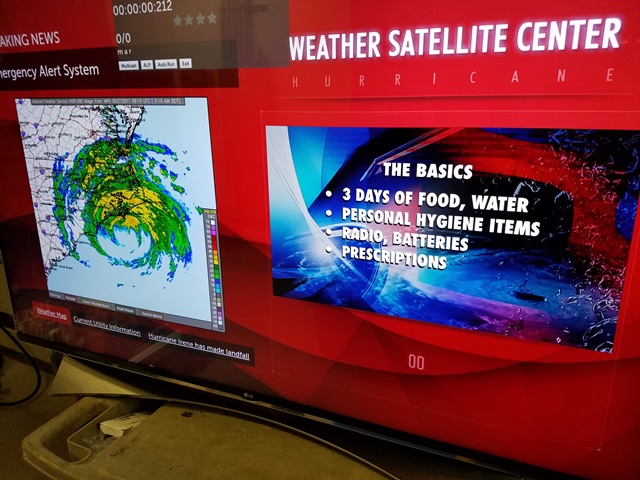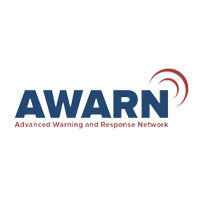ATSC 3.0: A New Value-Added Approach for Emergency Information
The ATSC 3.0 (aka ”Next Gen TV”) standard holds the potential to not only vastly improve the television viewing experience and expand programming opportunities, but also enhance emergency communications capabilities and create new operational capabilities for stations. Advanced Emergency Alerting is one such capability that is very much in the best interest of broadcasters, their audiences, and emergency managers.
Enhanced emergency information distribution is one of the major enhanced capabilities and potential benefits of Next-Gen TV. AEA in ATSC 3.0 will be much more than the current EAS in place, and much more than even “alerting”—providing a powerful tool to provide targeted emergency information of any type to TV audiences.
WHAT IS ATSC 3.0 ADVANCED EMERGENCY ALERTING?
How is AEA different from the current emergency alert system? Imagine—for example—the ability to provide targeted audiences with emergency information about a school lockdown, school district closures, traffic emergencies or other local disturbances— exactly the type of local urgent information that your audiences can use, but is also the kind of information that is NOT be part of an EAS message.

AEA allows emergency alerting to be enhanced with graphical and geotargeting capabilities
Imagine the ability to take an intrusive EAS event that would normally interrupt the audio of your programming and impose a crawl on screen, but send it out as AEA message;that is less intrusive to your audience, does not interrupt programming, allows the viewer to choose what info they want to see, and provide rich content and added value to your audiences.
Now imagine the ability to geotarget this type of emergency information, supplement it with graphics, video, and even incorporate your station’s live stream of coverage of the event. All of this would occur, without disrupting normal broadcast programming.
This next-generation emergency information capability provides the potential for a range of capabilities offered by television broadcasters to fixed, mobile and portable consumer devices that support these features, including:
Get the TV Tech Newsletter
The professional video industry's #1 source for news, trends and product and tech information. Sign up below.
●Audience targeting, ranging from the general public to non-public restricted messaging to specific groups (such as first responders or other organizations).
●Flexible alert messaging capability, sufficient to handle virtually any form of emergency information, ranging from all hazards public alerting to narrowly targeted urgent messaging for a smaller defined audience, and even to specific messaging for first responder functions.
●Location targeting that will allow compatible receivers to monitor alerts that can be addressed to specific geocodes, polygons or circles, essentially meaning that an alert can be targeted as widely as the entire broadcast area, or as narrowly as receivers in a very specific set of coordinates.
●Multimedia capabilities, allowing ATSC 3.0-enabled receivers to receive and display graphics, photos, maps, video, and other assets as part of the emergency information.
●Alert update and cancellation features;
●Alert priority settings;
●Parameter, to awaken compatible receivers when in standby or sleep mode, and
●Multilingual support, providing the prospect for broadcast viewers to select their language of choice for receiving emergency information.
The alerting capability in Next-Gen TV will provide enhanced next-gen emergency information capabilities for TV stations to reach the public. This capability will provide the basis for such initiatives as those promoted by the Advanced Warning and Response Network (AWARN) Alliance, a voluntary coalition of commercial and public broadcasters, consumer electronics and broadcast technology companies, national trade groups, and service providers who have come together to develop and deploy this ATSC 3.0-based emergency alerting capability; and it’s already been initiated over-the-air at WRAL-TV in Raleigh, N.C. under an experimental license.

THE ATSC 3.0 STANDARDS FOR AEA
Advanced Emergency Alerting is in fact drawn from features across the ATSC 3.0 suite of standards. Key components supporting Advanced Emergency Alerting are found within A/321 System Discovery and Signaling; A/324 Scheduler/Studio to Transmitter Link; A/331 Signaling, Delivery, Synchronization and Error Protection; A336 Content Recovery in Redistribution Scenarios; A/338 Companion Devices; A/342 Audio; and A/344 Application Runtime Environment. Below, we’ll discuss two of these standards in a bit of detail.
A/321 (System Discovery and Signaling) describes the ATSC 3.0 bootstrap, which is the initial discovery and entry point in the ATSC 3.0 waveform. The bootstrap is the most robust part of the transmission signal, containing 3 symbols each with 8 bits. In the bootstrap is a “wakeup” field which—if enabled—would rouse the ATSC 3.0 television receiver from standby or sleep mode if an urgent emergency message is accompanied by a “wakeup” request.
A/331 (Signaling, Delivery, Synchronization and Error Protection) defines the service signaling and IP delivery of a wide range of services and content, including electronic service guides, app-based services, linear audio-video services, and AEA. A specialized emergency messaging approach was needed for ATSC 3.0, tailored for this broadcast environment but also flexible enough to tackle a broad range of messaging requirements, including international (ATSC in an international standards body), multilingual and multimedia capabilities.
The AEA message format proposed by Monroe Electronics is now part of the ATSC A/331 proposed standard, with valuable contributions by fellow ATSC members. The AEA message itself is an XML-based format for ATSC 3.0 urgent message transmission. These XML-based messages are contained within an Advanced Emergency Alert Table (AEAT), which is one instance of low-level service (LLS) info defined in A/331. The AEAT can contain one or more AEA messages.
The AEA capability in ATSC 3.0 will support a broad range of urgent information— far beyond the scope and abilities of today’s EAS—for emergency information to the public, as well as restricted messages to closed groups (which could include first responders). The AEA capability native to ATSC 3.0 supports a wide range of multimedia content, including cached or live media, multiple languages, and features useful for app developers on mobile, portable and fixed ATSC 3.0 receivers. The AEA was designed to handle the unique content and alert message formats in the United States, Canada, Mexico, Caribbean, Korea and other ATSC countries.
For TV broadcasters, the next-generation ATSC 3.0 standard will allow station-driven emergency information to be integrated into a broad range of services, offering viewers the potential for individually-tailored alerts and emergency information over a portfolio of products (TV, web, mobile, etc.).
COMPARING EAS & ATSC 3.0 AEA
Conventional EAS is not likely to be going away any time soon, and ATSC 3.0 will support both EAS and AEA capabilities. In the U.S., we presume that FCC regulations requiring stations to carry the Presidential EAN alert, NPT and monthly tests (RMT) will mean that TV stations will continue to present an on-screen banner crawl for visual display of EAS messages, plus the EAS audio would likely remain part of the main audio track as defined in A/342.
However, AEA may provide a means to encourage TV stations to provide more emergency alerts in a way that will be more attractive and usable for both the station and its audience. Some EAS messages, for example, that TV stations typically would not air could be provided as a less intrusive AEA message. A severe thunderstorm warning, for example, is something that is not typically aired by TV stations as EAS, but could be presented as an AEA message—and the user can decide whether or not they want to access the information.
EAS and AEA may evolve into a complementary relationship, where the conventional EAS alert could be accompanied by an AEA from the station, with more instructions, maps, graphics and information that the conventional EAS just cannot support.
WHAT ARE THE NEXT PRACTICAL STEPS?
An ecosystem has already emerged across industry to bring ATSC 3.0 AEA capabilities to reality. The ATSC Implementation Team provides a venue for industry discussions of issues related to implementation of AEA, including operational and technical requirements for the successful inclusion and implementation of emergency alerting as part of the rollout of ATSC 3.0.
Key manufacturers, such as Monroe—as both a member of the AWARN Alliance and ATSC Implementation Team—have moved forward in implementing and integrating ATSC 3.0 capabilities in their product sets for broadcast television stations. In 2016, Monroe introduced initial support for ATSC 3.0 AEA capabilities, culminating with industry’s first over-the-air ATSC 3.0 transmission with emergency alerting at WRAL-TV.
This next-generation emergency information capability is a voluntary initiative of broadcasters and equipment manufacturers that is separate from (although potentially complementary) to EAS. As complementary functions, we expect that EAS will continue to provide its essential functions for national and local public alert and warning, while ATSC 3.0 next-generation alerting and capabilities will provide a value-added function from television broadcasters.
Importantly, for the broadcast community, the migration to ATSC 3.0 emergency alerting capabilities can leverage many of the assets that most TV broadcasters already have in place in their facilities. Because this portion of the television broadcast industry already has certain specific EAS equipment in place that can be upgraded for ATSC 3.0 support, the migration path for these stations may become even easier. Monroe Electronics is further integrating support for ATSC 3.0 into EAS equipment and content management solutions, providing the stepping-off point to leverage the enhanced public warning capabilities of next-generation digital television.
Edward Czarnecki, PhD, is senior director for Strategic & Government Affairs for Monroe Electronics, a provider of emergency information solutions for the TV industry. Dr. Czarnecki is active in several standards groups, particularly in the areas emergency alerting and emergency communications. He is a member of the ATSC Technology Group on ATSC 3.0 (TG3), the ATSC AHG on service delivery and synchronization for ATSC 3.0, as well as the AWARN Alliance. Dr. Czarnecki works closely with both broadcasters and government agencies, and is currently a member of several working groups examining next-generation alerting.He can be reached at ed.czarnecki@monroe-electronics.com.
For a comprehensive list of TV Technology’s ATSC 3.0 coverage, see our ATSC3 silo
